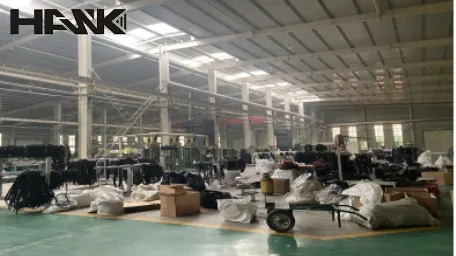- Arabic
- French
- Russian
- Spanish
- Portuguese
- Turkish
- Armenian
- English
- Albanian
- Amharic
- Azerbaijani
- Basque
- Belarusian
- Bengali
- Bosnian
- Bulgarian
- Catalan
- Cebuano
- Corsican
- Croatian
- Czech
- Danish
- Dutch
- Afrikaans
- Esperanto
- Estonian
- Finnish
- Frisian
- Galician
- Georgian
- German
- Greek
- Gujarati
- Haitian Creole
- hausa
- hawaiian
- Hebrew
- Hindi
- Miao
- Hungarian
- Icelandic
- igbo
- Indonesian
- irish
- Italian
- Japanese
- Javanese
- Kannada
- kazakh
- Khmer
- Rwandese
- Korean
- Kurdish
- Kyrgyz
- Lao
- Latin
- Latvian
- Lithuanian
- Luxembourgish
- Macedonian
- Malgashi
- Malay
- Malayalam
- Maltese
- Maori
- Marathi
- Mongolian
- Myanmar
- Nepali
- Norwegian
- Norwegian
- Occitan
- Pashto
- Persian
- Polish
- Punjabi
- Romanian
- Samoan
- Scottish Gaelic
- Serbian
- Sesotho
- Shona
- Sindhi
- Sinhala
- Slovak
- Slovenian
- Somali
- Sundanese
- Swahili
- Swedish
- Tagalog
- Tajik
- Tamil
- Tatar
- Telugu
- Thai
- Turkmen
- Ukrainian
- Urdu
- Uighur
- Uzbek
- Vietnamese
- Welsh
- Bantu
- Yiddish
- Yoruba
- Zulu
Aug . 19, 2024 05:32 Back to list
Top Rubber Belt Manufacturers for Quality Industrial Solutions and Reliable Performance
The Role of Rubber Belt Manufacturers in Modern Industries
Rubber belts are a fundamental component in various industries, serving numerous applications in transportation, machinery, and equipment. From automotive assembly lines to industrial conveyor systems, the effectiveness and reliability of rubber belts significantly influence operational efficiency. The manufacturers of these rubber belts play a crucial role, ensuring that products meet industry standards and the diverse needs of their clients.
Understanding Rubber Belt Manufacturing
Rubber belt manufacturing involves several stages, including material selection, design, production, and quality control. The process begins with the careful selection of rubber compounds, which can vary in hardness, elasticity, and resistance to environmental factors such as heat, oil, and abrasion. These properties are critical, as different applications demand different features from the rubber belts.
Design is another vital aspect, where manufacturers utilize advanced software to create belts that meet specific requirements. Engineers and designers collaborate closely to optimize performance, ensuring that the size, shape, and texture of the belts enhance their functioning. Once designed, the production process typically follows, involving mixing raw materials, vulcanizing them into form, and cutting them to the desired dimensions.
Quality Control and Industry Standards
Quality control is paramount in rubber belt manufacturing. Manufacturers often adhere to international standards such as ISO 9001 to ensure their products are reliable and safe for use. Regular testing, including tensile strength, elongation, and resistance tests, helps maintain high-quality output. This rigorous approach not only enhances the durability of the belts but also ensures compliance with safety regulations, minimizing the risk of failures in critical applications.
Innovation and Technology in Manufacturing
rubber belt manufacturers

As industries evolve, so do rubber belt manufacturers. The integration of technology in the manufacturing process has led to innovations that improve efficiency and reduce costs. Automation in production lines, for instance, has streamlined operations, allowing for faster output and greater precision. Additionally, advancements in materials science have enabled the development of high-performance rubber compounds that can withstand extreme conditions, further expanding the applications of rubber belts.
Moreover, manufacturers are increasingly adopting sustainable practices. There is a growing emphasis on producing eco-friendly rubber belts, utilizing renewable resources, and recycling materials. This shift not only addresses environmental concerns but also appeals to a market that is increasingly prioritizing sustainability.
The Market Landscape
The global rubber belt market has witnessed significant growth due to the rising demand from various sectors, including manufacturing, agriculture, and logistics. As economies expand, the need for efficient material handling systems has surged, boosting the demand for high-quality rubber belts. Manufacturers are now competing not only on quality but also on the capacity to customize products according to specific client needs.
In addition, regional market dynamics play a crucial role. Manufacturers in Asia, for instance, benefit from lower production costs, allowing them to offer competitive pricing. Conversely, companies in regions with stringent quality regulations often emphasize superior product quality and service.
Conclusion
In conclusion, rubber belt manufacturers are pivotal to the smooth functioning of numerous industries. Their role encompasses a comprehensive range of activities from material selection and design to production and quality control. As the market continues to evolve, these manufacturers remain at the forefront of innovation, adapting to technological advancements and shifting consumer preferences. The future of the rubber belt industry looks promising, driven by the constant demand for efficiency and sustainability in an increasingly competitive landscape.
-
Korean Auto Parts Timing Belt 24312-37500 For Hyundai/Kia
NewsMar.07,2025
-
7PK2300 90916-T2024 RIBBED BELT POLY V BELT PK BELT
NewsMar.07,2025
-
Chinese Auto Belt Factory 310-2M-22 For BMW/Mercedes-Benz
NewsMar.07,2025
-
Chinese Auto Belt Factory 310-2M-22 For BMW/Mercedes-Benz
NewsMar.07,2025
-
90916-02660 PK Belt 6PK1680 For Toyota
NewsMar.07,2025
-
drive belt serpentine belt
NewsMar.07,2025

